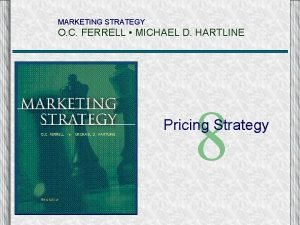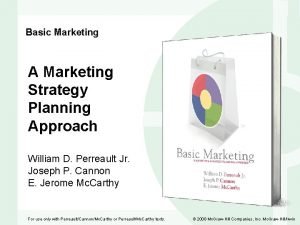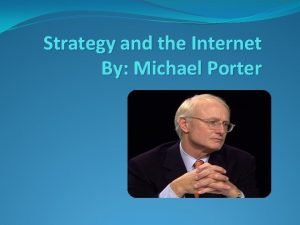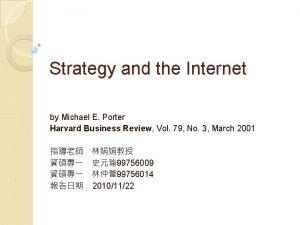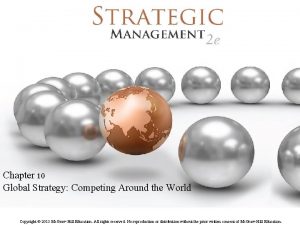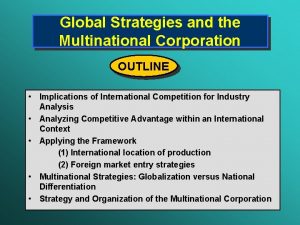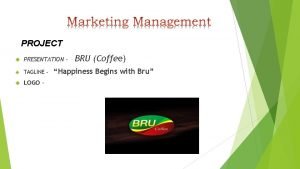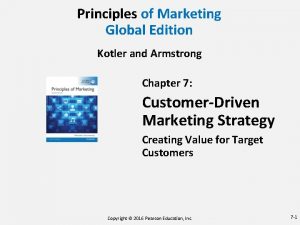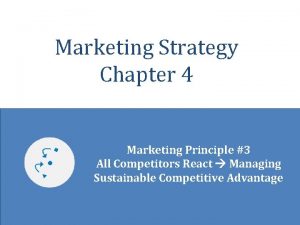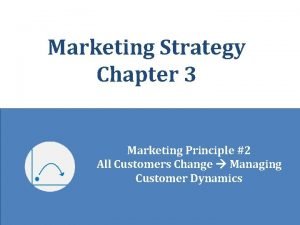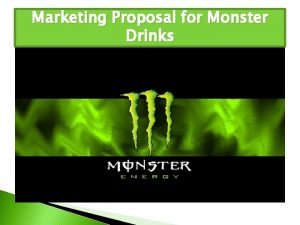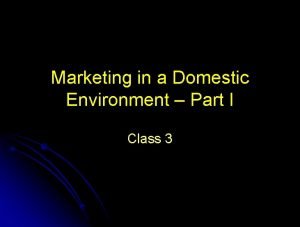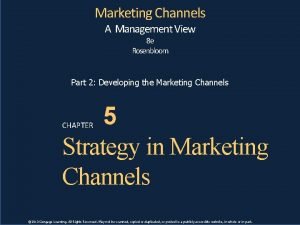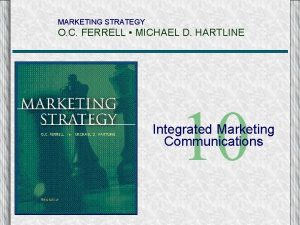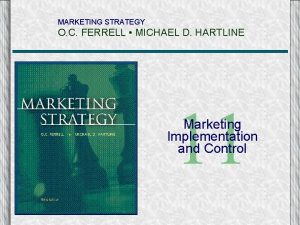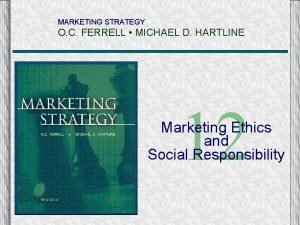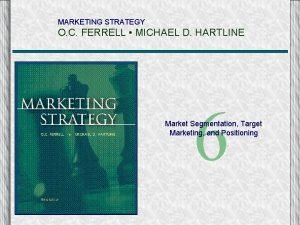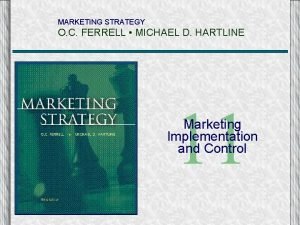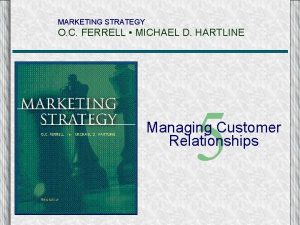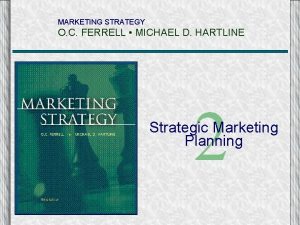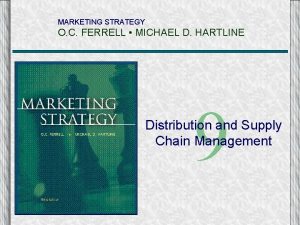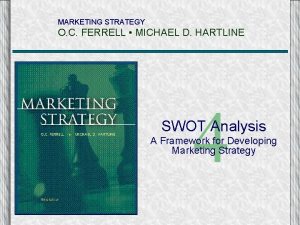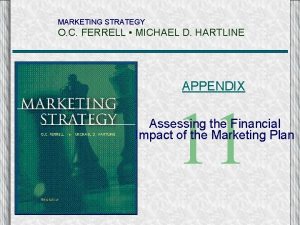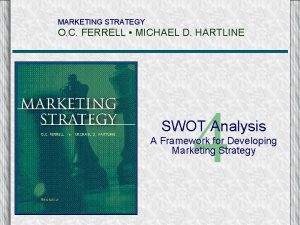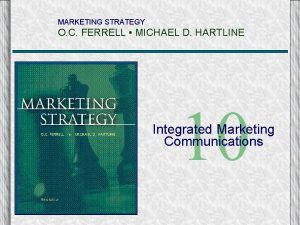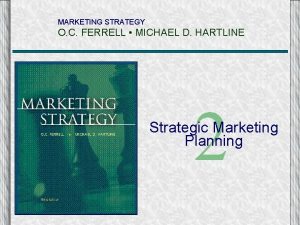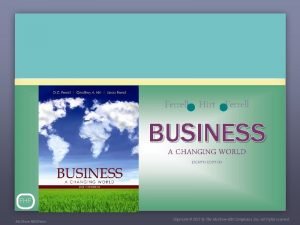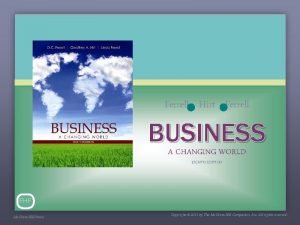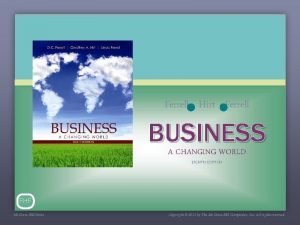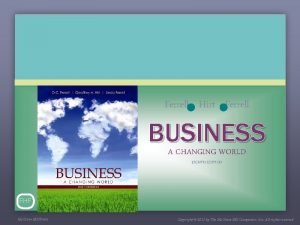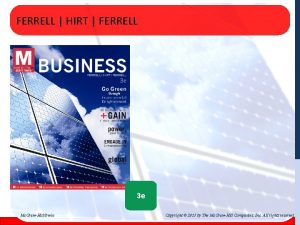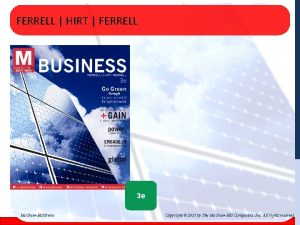MARKETING STRATEGY O C FERRELL MICHAEL D HARTLINE



























- Slides: 27

MARKETING STRATEGY O. C. FERRELL • MICHAEL D. HARTLINE 7 Product Strategy

Product Classification (1 of 3) • Consumer Product Classifications – Convenience Products – Shopping Products – Specialty Products – Unsought Products • (1) Products of which consumers are unaware • (2) Products that consumers do not consider purchasing until a need or emergency arises 2

Specialty Products 3

Product Classification (2 of 3) • Business Product Classifications – Raw Materials – Component Parts – Process Materials – MRO Supplies – Accessory Equipment – Installations – Business Services 4

Product Classification (3 of 3) • Product Lines and Mixes – Product Line – Product Mix • Benefits of offering a wide variety and deep assortment of products: – Economies of Scale – Package Uniformity – Standardization – Sales and Distribution Efficiency – Equivalent Quality Beliefs 5

Product Lines and Product Mixes at Gillette Exhibit 7. 1 6

Discussion Question • Consider the number of product choices that are available in the U. S. consumer market. In virtually every product category, consumers have many, many options to fulfill their needs. Are all of these options really necessary? Is having this many choices a good thing for consumers? Why or why not? 7

New Product Development • Six strategic product development options: – (1) New-to-the-world products (discontinuous innovations) – (2) New product lines – (3) Product line extensions – (4) Improvements or revisions of existing products – (5) Repositioning – (6) Cost reductions • Customer perception of differentiation is critical 8

Avis: “We Try Harder” 9

Product Strategy Throughout the Life Cycle • • • Development Stage Introduction Stage Growth Stage Maturity Stage Decline Stage 10

Stages of the Product Life Cycle Exhibit 7. 2 11

Marketing Strategy During the Product Life Cycle Exhibit 7. 3 12

Development Stage • No sales revenue during this stage • Components of the product concept: – An understanding of desired uses and benefits – A description of the product – The potential for creating a complete product line – An analysis of the feasibility of the product concept • Customer needs should be discerned before developing marketing strategy 13

Introduction Stage • Begins when development is complete • Ends when customers widely accept the product • Marketing strategy goals during this stage: – Attract customers by raising awareness and interest – Induce customers to try and buy – Engage in customer education activities – Strengthen or expand channel and supply relationships – Build on availability and visibility – Set pricing objectives 14

Growth Stage (1 of 2) • Be ready for sustained sales increases • Rapid increase in profitability early in the growth stage that decreases at the end of this stage • Length depends on nature of product and competitive reactions • Two strategies: – (1) Establish a strong, defensible marketing position – (2) Achieve financial objectives 15

Growth Stage (2 of 2) • Marketing strategy goals in this stage: – – – – Leverage the product’s perceived differential advantages Establish a clear product and brand identity Create unique positioning Maintain control over product quality Maximize availability of the product Maintain or enhance the product’s profitability to partners Find the ideal balance between price and demand Keep an eye focused on the competition 16

Maturity Stage (1 of 2) • Few, if any, new firms will enter the market • Still an opportunity for new product features and variations • Typically the longest stage in the product life cycle 17

Maturity Stage (2 of 2) • Four general goals in this stage: – (1) Generate Cash Flow – (2) Hold Market Share – (3) Steal Market Share – (4) Increase Share of Customer • Four options to achieve these goals: – (1) Develop a new product image – (2) Find attract new users to the product – (3) Discover new applications for the product – (4) Apply new technology to the product 18

Decline Stage • Two options: – (1) Attempt to postpone the decline – (2) Accept its inevitability • Harvesting • Divesting • Factors to be considered during this stage: – Market segment potential – The market position of the product – The firm’s price and cost structure – The rate of market deterioration 19

Marketing Strategy in Action • Ford has been creative in restyling the 2005 Mustang with retro styling cues to keep the model viable despite decreasing interest in “muscle cars. ” What other ways can marketers combat the inevitability of the decline stage of the product life cycle? 20

Discussion Question • Describe the different product decisions that impact each phase of the product life cycle. If you were losing money with a product in the decline stage, why might you consider retaining that product? Why would a firm or brand manager become sentimental about a product and hold on to it even in the face of monetary losses? 21

Branding Strategy • Key Issues In Branding – Brand Loyalty – Brand Equity – Brand Alliances • Packaging and Labeling – Packaging • Protection, storage, convenience, etc. – Labeling • The Nutritional Labeling and Education Act of 1990 • Food Choking Prevention Act 22

Advantages of Branding Exhibit 7. 4 23

The World’s Twenty-Five Most Valuable Brands Exhibit 7. 5 24

Product Strategy for Services • Characteristics of Services • Marketing Strategy for Services – Product Issues – Pricing Services – Promoting Service Benefits – Distributing Services 25

Unique Characteristics of Services and Resulting Marketing Challenges Exhibit 7. 6 26

Discussion Question • Given the unique characteristics of services, what potential ethical issues could arise in service marketing and delivery? How can a service marketer prevent ethical challenges and convey a sense of trust to customers? 27
 Syrgkanis
Syrgkanis Marketing strategy ferrell
Marketing strategy ferrell Ferrell global strategy
Ferrell global strategy Casey ferrell
Casey ferrell Universal functions of marketing
Universal functions of marketing Strategy and the internet
Strategy and the internet Strategy and the internet michael porter
Strategy and the internet michael porter Corporate strategy and business strategy
Corporate strategy and business strategy Firms that emphasize global integration make and sell
Firms that emphasize global integration make and sell Chase demand example
Chase demand example What is multidomestic strategy
What is multidomestic strategy Aligning hr strategy with business strategy
Aligning hr strategy with business strategy Liability of foreignness
Liability of foreignness Crafting and executing strategy in strategic management
Crafting and executing strategy in strategic management Strategy formulation and implementation
Strategy formulation and implementation Top-down listening strategy is a listener-based strategy.
Top-down listening strategy is a listener-based strategy. Directional strategies in strategic management
Directional strategies in strategic management International or multinational
International or multinational Marketing plan of starbucks
Marketing plan of starbucks Swot analysis nfl
Swot analysis nfl Tagline of bru coffee
Tagline of bru coffee Positioning kotler
Positioning kotler Aer strategy grid
Aer strategy grid Aer model marketing
Aer model marketing Marketing strategy structure
Marketing strategy structure Marketing strategy of monster energy drink
Marketing strategy of monster energy drink Domestic marketing strategy
Domestic marketing strategy Developing the marketing channel
Developing the marketing channel

